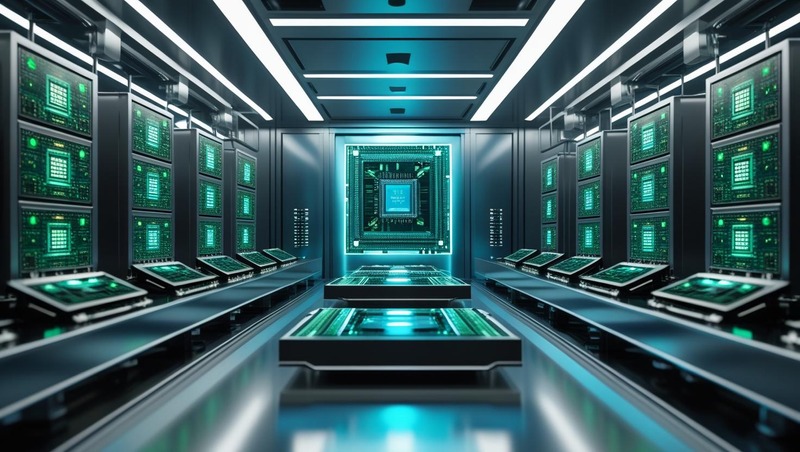The next-generation memory market is poised for substantial growth through 2028, driven by increasing demand for faster, more efficient, and higher-capacity memory solutions. Traditional memory technologies such as DRAM and NAND flash are reaching their physical and performance limitations, creating an urgent need for innovative alternatives. Next-generation memory technologies—including MRAM, ReRAM, 3D XPoint, and PCM—are emerging as viable replacements capable of bridging the gap between volatile and non-volatile memory, offering the perfect balance of speed, endurance, and data retention.
One of the primary factors driving the growth of next-generation memory is the exponential increase in data generation and processing requirements across various industries. The proliferation of artificial intelligence (AI), machine learning (ML), edge computing, and Internet of Things (IoT) has significantly increased the need for real-time data access and low-latency storage. Next-generation memory technologies, with their ultra-fast data processing capabilities, low power consumption, and scalability, are ideally suited to meet the performance demands of these applications.
Download PDF Brochure @ https://www.marketsandmarkets.com/pdfdownloadNew.asp?id=632

The ongoing digital transformation across industries such as automotive, healthcare, consumer electronics, and telecommunications is also fueling the adoption of advanced memory solutions. In particular, the rise of electric and autonomous vehicles is creating new requirements for memory that can withstand harsh environments while delivering rapid processing speeds and high reliability. MRAM and ReRAM are gaining popularity in automotive applications due to their robustness, speed, and non-volatility.
Another key driver is the evolution of data centers and cloud computing. As organizations increasingly rely on cloud-based infrastructure to store and process vast amounts of data, there is a pressing need for memory technologies that can offer higher densities, faster throughput, and lower energy consumption. Emerging memory technologies such as 3D XPoint, developed by Intel and Micron, offer significant performance improvements over traditional NAND flash and are being increasingly adopted in high-performance computing environments.
Government and industry investments in memory R&D are further accelerating innovation. Many leading tech companies are investing heavily in the commercialization of next-gen memory technologies. Strategic partnerships, mergers, and acquisitions are becoming common as players seek to enhance their R&D capabilities and expand product portfolios. Additionally, efforts to develop universal memory—an ideal memory solution combining the advantages of DRAM, NAND, and SRAM—are underway, which could revolutionize computing architectures in the near future.
Despite the promising outlook, the market does face some challenges. High manufacturing costs, technological complexity, and the need for compatibility with existing infrastructure could slow down mass adoption. However, as production scales and technological barriers are overcome, next-generation memory is expected to become more economically viable and widely available.
Looking ahead, the next-generation memory market is expected to experience a robust compound annual growth rate (CAGR) through 2028. Continuous advancements in semiconductor fabrication, increasing deployment of AI-powered applications, and the shift toward energy-efficient computing will continue to drive demand for innovative memory solutions. As the digital economy expands and computing requirements evolve, next-generation memory will play a pivotal role in shaping the future of data processing and storage.
Frequently Asked Questions (FAQ) on Next-Generation Memory Market
What is the total CAGR expected to be recorded for the next-generation memory market size during 2023-2028?
The global next-generation memory market is expected to record the CAGR of 23.2% from 2023-2028.
Which regions are expected to pose significant demand for next-generation memory market share from 2023-2028?
North America, and Asia Pacific is expected to pose significant demand from 2023 to 2028. Major economies such as US, Canada, China, Japan, and South Korea are expected to have a high potential for the future growth of the market.
What are the major market opportunities in the next-generation memory market share?
Increasing adoption of next-generation memory technologies in embedded systems and IoT devices, and rising adoption of high-bandwidth memory (HBM) in data centers for memory-intensive applications are projected to create lucrative opportunities for the players operating in the next-generation memory market during the forecast period.
Which are the significant players operating in next-generation memory market?
Key players operating in the next-generation memory market are SAMSUNG (South Korea), SK Hynix Inc (South Korea), Micron Technology, Inc. (US), KIOXIA Holdings Corporation (Japan), and Fujitsu (Japan).
What are the major applications of the next-generation memory market?
Consumer electronics, enterprise storage, automotive and transportation, telecommunications, industrial, automotive, military and aerospace, agriculture, retail, and healthcare are the major applications of the next-generation memory market.
